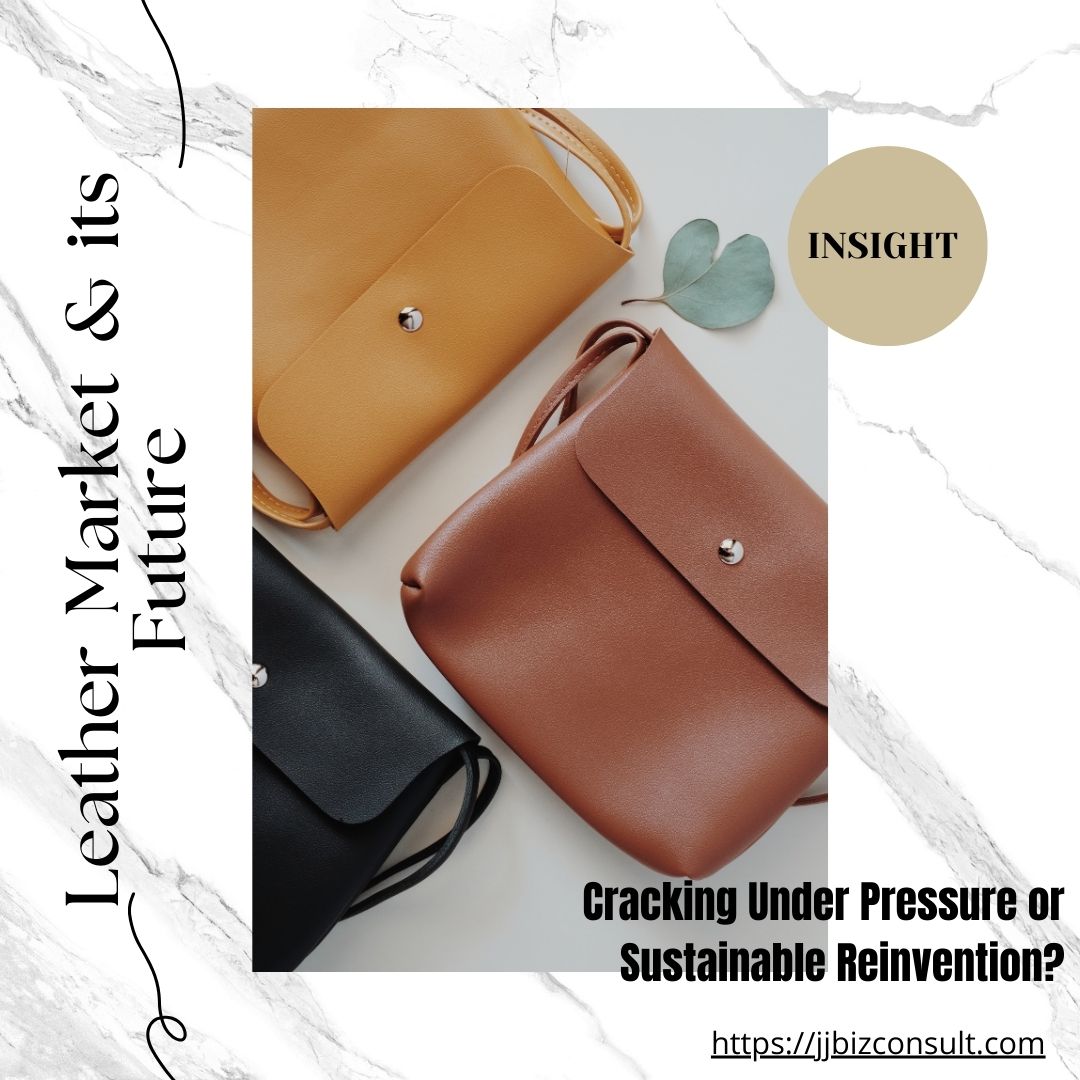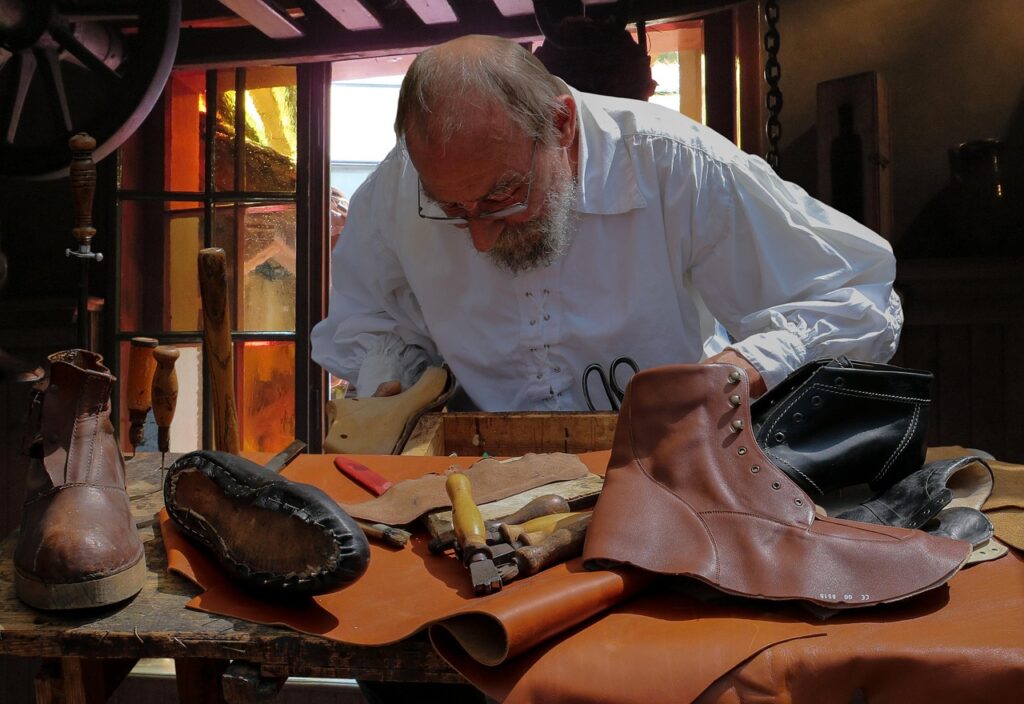
Leather Market & its Future
The global leather market, a colossal $440 billion industry, stands at a pivotal juncture, poised to surge to $740 billion by 2032. However, this trajectory is laden with ethical and environmental dilemmas.
The global leather market

Renowned fashion behemoths such as Hermès, Prada, Nike, and Adidas, who have long championed leather, now confront heightened scrutiny. The material is entangled with issues ranging from deforestation and animal welfare concerns to significant greenhouse gas emissions. The cracks in the leather industry extend beyond the fashion realm.
Apple ditches leather
In a surprising move last September, tech giant Apple, known for its sleek designs, announced plans to eliminate leather from its product lines. Striving for carbon-neutrality by 2030, Apple has opted for FineWoven, a suede-like fabric predominantly crafted from recycled materials. This bold decision echoes a shift in the industry’s tides.
Fashion houses are heeding the call
Fashion houses, responding to the growing call for sustainability, are embracing alternatives such as “vegan leather.” This burgeoning $62 million market in 2022 is projected for near-double-digit growth until 2030. The diverse array of materials, from pineapple fibers to apple cores and mushroom mycelium, exemplifies the industry’s commitment to providing sustainable and cruelty-free alternatives. Apple’s move signifies a turning point, prompting the industry to confront environmental and ethical challenges head-on.
Is the leather market doomed?
The leather market, far from being doomed, stands on the cusp of reinvention. Producers can seize this opportunity by investing in sustainable practices—ethical sourcing, closed-loop production, and chrome-free tanning. These strategies not only align with shifting consumer values but also open doors to emerging markets seeking eco-conscious products.

The future of the leather market is not set in stone
While the future of the leather market is uncertain, the current upheaval offers a chance for transformation. The industry can either cling to its traditional methods, risking potential decline, or embrace innovation and sustainability to forge a path toward a more ethical and environmentally responsible future. Examples abound of businesses successfully navigating this shift. Ethical sourcing initiatives by renowned brands such as Stella McCartney and Patagonia demonstrate that responsible practices can coexist with profitability.
Additionally, innovative materials like Piñatex, derived from pineapple leaf fibers, have gained traction as a sustainable and cruelty-free leather alternative. In a groundbreaking move, luxury carmaker Tesla has also embraced vegan leather for its vehicle interiors. This shift reflects a broader trend in industries beyond fashion, highlighting that sustainability is not merely a passing fad but a crucial consideration for long-term success.
Research Studies on Leather Market

Research studies, such as the one conducted by Salve Regina University, delve into the environmental impact of traditional leather production and provide insights into alternative materials’ ecological benefits.
“The leather industry generates over USD 50 billion annually, with an expected increase of $92.36 billion by 2028, as seen in Figure 1 (Statistica, 2023.) Leather in the textile and garment industry accounts for 37.8% of footwear, 13.4% of leather goods, 13.4% of automotive interiors, 13.3% of upholstered furniture, 11.4% in garments, and 1.8% for other products (Cotance, n.d.). It is a versatile material leftover from the meat industry that is durable, repairable, recyclable, long-lasting, attractive to the consumer, and biodegradable at the end of its life cycle.
It also keeps 300 million hides from US landfills and 6.6 million tons of extra emissions from entering the atmosphere. (Leather and Hide Council of America, 2021). However, there are environmental effects from the process of leather making that adversely impact workers’ health, local bodies of water, gas emissions, deforestation, and pollution. The tannery process releases diverse pollutants, including chromium, which, if not appropriately managed, can contaminate air, soil, food, and water through ingestion, inhalation, and dermal contact (WorstPolluted, n.d.).
Methane gas released from cattle livestock produces further contaminants contributing to climate change. The industrial process of turning hides into leather also releases other pollutants like depilatory chemicals, sulfuric acid, deliming agents, oils, grease, and leather fiber/dust, which leak into and damage the environment. Tanning is a resource-intensive industry, and with high consumer demand, leather production will continue to damage the environment without the proper measures.”– quote Salve Regina University
Conclusion
This comprehensive exploration of sustainable alternatives informs the ongoing discourse on reshaping the leather market. In conclusion, the leather market faces a critical choice: succumb to pressure and risk obsolescence or embrace sustainability, ushering in a new era of ethical practices. As the industry grapples with this decision, one truth is evident—the future is not leather-bound but open to innovation, reinvention, and a commitment to a greener world.
Green Tea world market a Sizable US$26.16 Billion






I do not even understand how I ended up here, but I assumed this publish used to be great
Subject: Thank You for Your Kind Words
Hi [Kaylah],
We’re delighted to hear that you found our content great, even if it was by chance! Your positive feedback means a lot to us.
If you have any specific thoughts or suggestions, we’d love to hear more. Feel free to explore more of our content, and if you have any questions or comments, don’t hesitate to reach out.
Thanks again for stopping by!
Best regards, jay